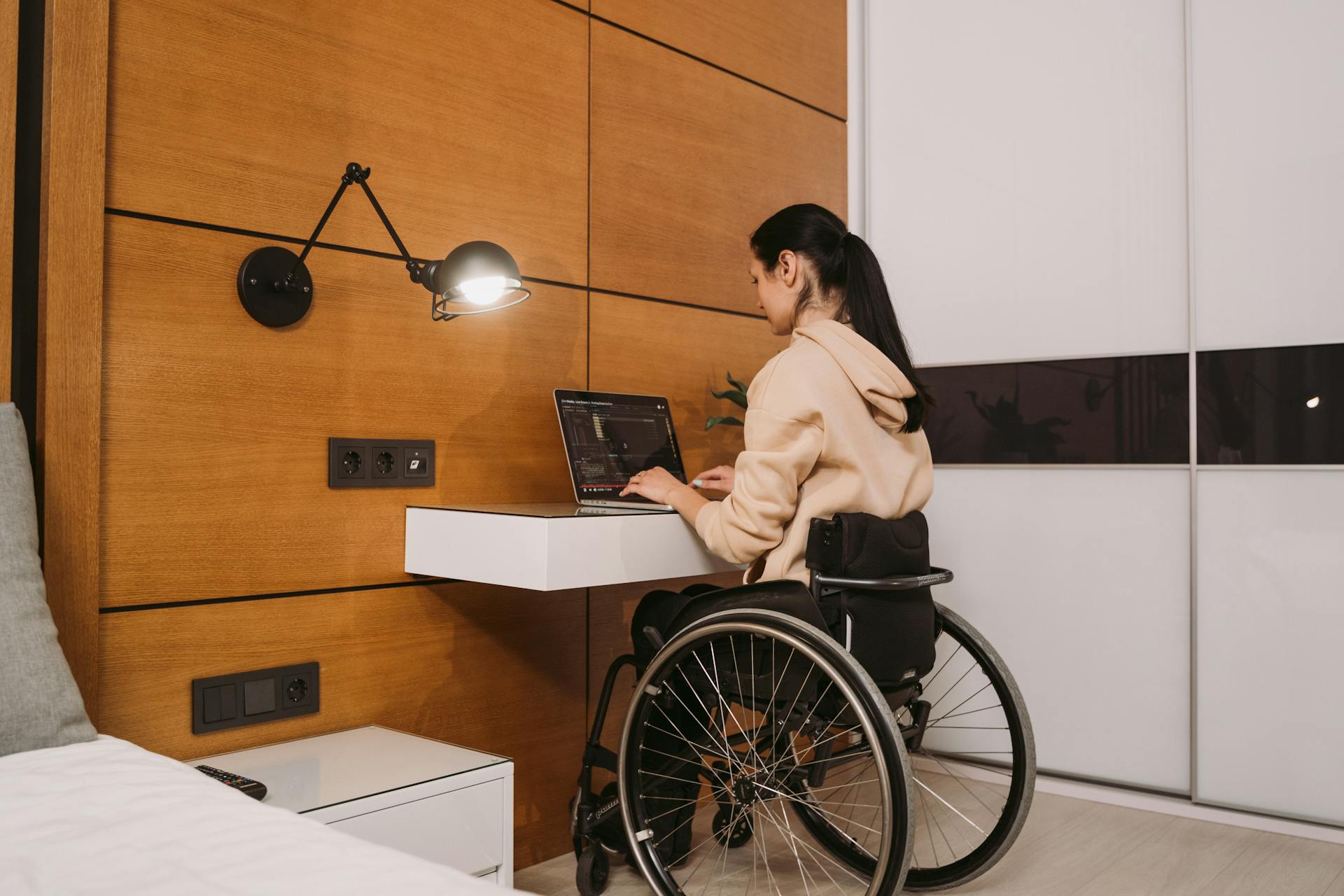Given the diversity of today’s workforce, it is imperative to create an inclusive workspace, and an OKU (Orang Kurang Upaya) friendly office design is essential to reaching this objective. People with disabilities are guaranteed equal access and chances to contribute productively in an OKU-friendly environment.
The key components of an inclusive workspace design are described in this article, with a focus on the significance of careful planning and execution to create a work environment that supports the success of all employees.
Businesses that prioritise comfort and accessibility not only meet legal requirements but also improve morale, productivity, and brand reputation. Embracing inclusion in office design means appreciating each team member’s contribution to the success of the business, not merely fulfilling requirements.
Core Features of OKU-Friendly Office Design
When coming up with innovative OKU-friendly solutions for the office, office planners should keep these five essential elements in mind in order to create a welcoming environment for individuals with disabilities. They are as follows:
- Wheelchair Accessibility
- Adaptive Workstations
- Accessible Restrooms
- Visual and Auditory Assistance
- Accessible Parking and Entryways
1. Wheelchair Accessibility
Ensuring wheelchair users to manoeuvre with ease is a crucial aspect of inclusive office design. This entails putting in accessible restrooms with adequate room for mobility, broad doorways, roomy elevators, and ramps.
2. Adaptive Workstations
Workstations should be designed to meet a variety of needs, with chairs and workstations that can be adjusted to suit varying body types and degrees of mobility. Equipping all staff with ergonomic tools and equipment improves their comfort and productivity.
3. Accessible Restrooms
Restrooms ought to be built with wheelchair-accessible space, grab bars and lower wash basin heights. All office areas should have easy access to facilities, guaranteeing each person’s privacy and dignity.
4. Visual and Auditory Assistance
Employees with vision impairments can traverse the workplace with the assistance of tactile guides and Braille signage. Individuals with hearing impairments are supported with auditory assistance, such as visual alarm systems and hearing loop devices.
5. Accessible Parking and Entryways
Automatic doors and designated parking spaces at the building entrance make it simple for those with disabilities to enter the office, highlighting the significance of being considerate from the outset.
Benefits of Implementing OKU-Friendly Design

Adopting an OKU-friendly office design is more than just making physical space adjustments; it represents a deeper dedication to equality and diversity in the workplace. Businesses that intentionally create spaces that meet the requirements of people with disabilities not only cultivate a respectful and supportive culture, but they also open up a number of advantages that boost the success of the company as a whole. The following are the main benefits of using OKU-compatible design:
Enhanced Employee Well-being and Productivity: A workplace that meets the requirements of all users creates a more engaging, comfortable, and healthy atmosphere. By enabling every worker to give their all, this inclusivity raises spirits, lowers stress levels, and improves overall productivity.
Legal Compliance and Risk Reduction: Making the necessary adjustments to your office to meet accessibility regulations will help you stay legal and lower your risk of fines and discrimination lawsuits. It displays a proactive approach to upholding your moral and legal duties for the welfare of your employees.
Brand Reputation and Corporate Responsibility: An organisation can enhance its image and reputation among clients, prospective employees, and partners by showcasing its commitment to diversity and inclusion through the design of an OKU-friendly office. It attracts people who have similar beliefs and builds brand loyalty and trust by indicating that the company is socially conscious and ethical.
Planning and Executing an OKU-Friendly Office Space
Understanding the unique requirements of each potential office user is the first step in creating and implementing an OKU-friendly office space. Here are some tips for making sure your office is inclusive and accessible:
Assessment and Consultation: To begin with, thoroughly evaluate your existing workspace to find any obstacles that might stand in the way of accessibility. Seeking guidance from professionals with expertise in OKU-friendly design and, crucially, from people with direct experience of residing with disabilities, can yield significant understanding of the needed adjustments.
Technology and Tools: Invest in tools and adaptive technology that make it easier for workers with impairments to accomplish their jobs. This comprises office equipment that is adjustable to meet different demands and software for those with visual and hearing impairments.
Flexible Policies: Implement flexible work policies that take into account each employee’s particular needs. This could involve providing opportunities for flexible work schedules, remote work, and personalised workstations so that each person can contribute to the best of their abilities.
Businesses may set the bar for contemporary workplace settings by carefully designing and putting these techniques into practice and creating an office space that is not just OKU-friendly but also fosters an inclusive and respectful culture.
Challenges and Solutions in OKU-Friendly Office Design
Budget Constraints: The perceived high cost of adopting OKU-friendly adjustments is one of the main obstacles. The solution is give top priority to necessary features that have the biggest effects on accessibility. Also, examine any grants or incentives offered by the government to promote workplace diversity.
Space Limitations: It could be difficult for smaller offices to implement every suggested accessibility element. So, put your attention on adaptable design elements that optimise space utilisation without sacrificing accessibility, such as movable furniture and equipment.
Lack of Expertise: It may not always be possible to obtain the specialised knowledge needed to design an OKU-friendly office. Seek advice from consultants with experience in accessible design and make use of resources provided by organisations that advocate for people with disabilities.
Maintaining Aesthetics: It can be difficult to strike a balance between practicality and aesthetic appeal in office design. To ensure that inclusivity improves rather than diminishes the office, collaborate with designers that have experience developing visually appealing and accessible spaces.
By thoughtfully addressing these issues, OKU-friendly office design is made to be advantageous and useful, promoting a more diverse and effective work environment.
Conclusion
To sum up, adopting OKU-friendly office design is an essential first step in building a diverse and effective work environment. Through thoughtful evaluation of important factors and creative problem-solving, companies may guarantee that their workspaces are accessible to every worker, promoting an inclusive and diverse workplace culture.
Such an environment improves staff productivity and well-being in addition to compliance and reputation.
Going forward, such office design ought to be seen as a basic component of contemporary workplace design, not as an add-on. This is because a varied staff is crucial to drawing and keeping in a cutthroat corporate environment.
To know more about articles such as this, you may refer to Pelaburan Hartanah Berhad (PHB)’s website to gather more information about it.





